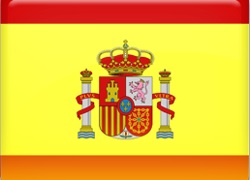The European Union is preparing to relax its strict 100ml liquid limit for air travel as new CT scanners capable of detecting liquid explosives are approved. While not all airports are ready, some in Germany may soon allow up to two liters in hand luggage. Full implementation will take time due to equipment upgrades and software delays. The original rule was introduced in 2006 after a foiled terror plot.
EU to Ease Liquid Rules for Air Travel with New Scanner Technology


Strict liquid limits for air travel hand luggage may soon be a thing of the past in the European Union, as new scanners capable of detecting liquid explosives have received official approval.
At present, air travelers are restricted to carrying liquids in containers holding no more than 100 milliliters. However, the introduction of this advanced technology could signal the beginning of the end for one of the most unpopular air travel regulations.
The scanners make use of medical-grade CT imaging, delivering high-resolution 3D visuals that enable security personnel to inspect the contents of luggage layer by layer, without slowing down the screening process. These scanners are capable of identifying both solid and liquid explosives.
According to a spokesperson from the EU Commission, who spoke with the DPA news agency, the new technology makes it possible for airports to remove the liquid limit rule. Nonetheless, the decision to implement the change rests with individual airports.
The rules will not change overnight, as many airports are still not equipped with the necessary technology. However, the German Airports Association (ADV) informed the AFP news agency that passengers at certain German airports may soon be permitted to carry up to two liters of liquid in their hand luggage.
“This is a major step toward greater convenience and faster procedures at airports,” said Ralph Beisel, the ADV's chief executive. He described the new scanning technology as “safe and reliable.”
Despite this progress, the majority of German air travelers will need to remain patient. A combination of outdated and new equipment, inconsistent software readiness, and the inability to inform passengers in advance about which scanner will be used means that travelers must continue adhering to the current rules. Liquids must still be placed in resealable plastic bags with a maximum volume of one liter.
The original 100ml liquid rule has frequently caused confusion among travelers—especially when it was first introduced—due to unclear instructions, inconsistent enforcement, and general frustration over what is and isn’t allowed.
Germany’s largest airport in Frankfurt has already installed the new scanners at 40 of its nearly 190 security screening lanes, with another 40 devices on order. However, no immediate changes to the existing policy are planned because it remains unclear which scanner will be assigned to individual passengers.
At Munich Airport, Germany’s second-largest, the scanners are already in widespread use. Nevertheless, a government spokesperson noted that necessary software updates will be postponed in order to avoid disruptions during the busy summer travel season. As a result, liquid restrictions will continue to apply, particularly in lanes that still operate with conventional scanning systems.
The EU Commission reports that around 700 CT-based scanners are either in operation or currently being installed at airports across 21 EU countries. The 100ml liquid rule was originally introduced in 2006, following a foiled terrorist plot that involved liquid explosives intended for use on board an aircraft.
While CT scanners have existed for some time and have occasionally been used to allow larger liquid containers through security, concerns about their reliability arose last year. This led the EU to require further testing before granting widespread approval.

 বাংলা
বাংলা  Spanish
Spanish  Arabic
Arabic  French
French  Chinese
Chinese 
